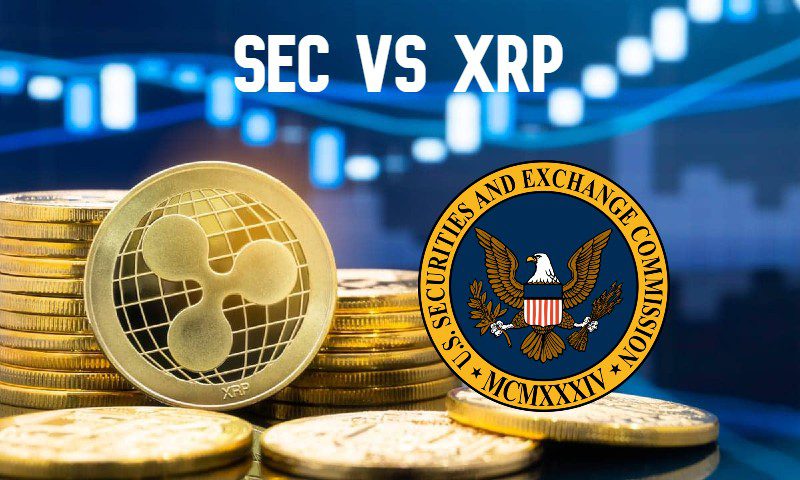XRP is a cryptocurrency that was created in 2012 by the company Ripple Labs. It is used as a means of exchange and a store of value, and it is designed to facilitate cross-border payments and currency exchange.
The Securities and Exchange Commission (SEC) is a U.S. government agency that is responsible for regulating the securities industry and protecting investors. The SEC has the authority to take enforcement action against individuals or companies that engage in securities fraud or other illegal activities.
In this article, we will explain the settlement between XRP and the SEC, which has been a highly publicized and controversial event in the cryptocurrency industry. We will examine the background of the case, the details of the settlement, and the implications for XRP and the wider cryptocurrency market.
Background: The SEC’s Lawsuit Against XRP
In December 2020, the SEC filed a lawsuit against Ripple Labs, two of its executives (Brad Garlinghouse and Chris Larson), and XRP, alleging that they had engaged in an illegal securities offering of XRP. The SEC argued that XRP was a security, and therefore subject to federal securities laws, and that Ripple Labs had sold billions of dollars’ worth of XRP without registering it as a security.
The SEC’s lawsuit against Ripple Labs, Garlinghouse, and Larson was met with significant backlash from the cryptocurrency community, as many argued that XRP was not a security and that the SEC was overstepping its authority. Some also argued that the SEC’s action was motivated by a desire to protect traditional financial institutions and suppress innovation in the cryptocurrency industry.
The SEC’s lawsuit against Ripple Labs and its executives was based on the Howey Test, which is a legal precedent that is used to determine whether a financial instrument is a security. The Howey Test states that a financial instrument is a security if it meets the following criteria:
- It is an investment of money
- It is in a common enterprise
- There is an expectation of profits from the investment
The SEC argued that XRP met all of these criteria and therefore was a security. Ripple Labs, Garlinghouse, and Larson disputed this assertion, arguing that XRP was not a security and that the SEC was applying the Howey Test incorrectly.
Details of the Settlement
In April 2021, Ripple Labs, Garlinghouse, and Larson reached a settlement with the SEC. Under the terms of the settlement, Ripple Labs agreed to pay a $300 million penalty and to register XRP as a security. Garlinghouse and Larson agreed to pay $1.4 million and $750,000 in penalties, respectively.
The settlement also included a provision requiring Ripple Labs, Garlinghouse, and Larson to “disgorge” their profits from the sale of XRP. This means that they must return the profits they made from the sale of XRP to the SEC, which will distribute the funds to harmed investors.
It is important to note that the settlement between XRP and the SEC did not include an admission of guilt or wrongdoing. Ripple Labs, Garlinghouse, and Larson did not admit to any of the SEC’s allegations, and they did not acknowledge that XRP is a security.
The settlement between XRP and the SEC was seen as a victory for the SEC, as it demonstrated the agency’s ability to take enforcement action against cryptocurrency companies and individuals. However, the settlement was also seen as a compromise, as it did not result in a finding of guilt or a ban on the sale of XRP.
Implications for XRP and the Cryptocurrency Market
The settlement between XRP and the SEC has had significant implications for the cryptocurrency market. One of the main impacts has been the market’s reaction to the news. After the settlement was announced, the price of XRP dropped significantly, as many investors sold off their holdings. Some also argued that the settlement could have a chilling effect on the development of other cryptocurrencies, as it could lead to more regulatory scrutiny and uncertainty.
The settlement has also had implications for the use of XRP. Since XRP is now registered as a security, it is subject to stricter regulatory oversight, which could limit its adoption by merchants and other users.
It is also worth noting that the settlement does not necessarily resolve all of the legal issues surrounding XRP. Some investors have filed class action lawsuits against Ripple Labs, alleging that they were misled about the nature of XRP and suffered losses as a result. These lawsuits could potentially lead to further legal action and financial penalties for Ripple Labs and its executives.
One of the main questions raised by the settlement between XRP and the SEC is whether other cryptocurrencies should also be considered securities. The SEC has not provided clear guidance on this issue, and it is likely that the determination of whether a cryptocurrency is a security will be made on a case-by-case basis. This could lead to further regulatory uncertainty and legal challenges in the cryptocurrency market.
Overall, the settlement between XRP and the SEC has raised significant questions about the legal status of cryptocurrencies and the role of regulatory bodies in the industry. It remains to be seen how these issues will be resolved, and it is likely that the settlement will have ongoing implications for XRP and the wider cryptocurrency market. Some have argued that the settlement could set a precedent for future regulatory action against other cryptocurrencies, while others have argued that it could lead to more clarity and stability in the market.
One thing that is certain is that the settlement between XRP and the SEC has brought increased attention to the legal status of cryptocurrencies and the role of regulatory bodies in the industry. It is likely that these issues will continue to be a source of debate and discussion in the coming years, as the cryptocurrency market continues to evolve and mature.
Conclusion
In this blog post, we have explained the settlement between XRP and the Securities and Exchange Commission (SEC), which has been a highly publicized and controversial event in the cryptocurrency industry. We have examined the background of the case, the details of the settlement, and the implications for XRP and the wider cryptocurrency market.
The settlement between XRP and the SEC has had significant implications for the cryptocurrency market, including market reaction, regulatory oversight, and legal uncertainty. It remains to be seen how these issues will be resolved, and it is likely that the settlement will have ongoing implications for XRP and the wider cryptocurrency market.




